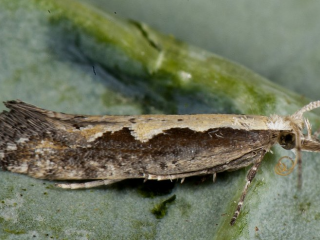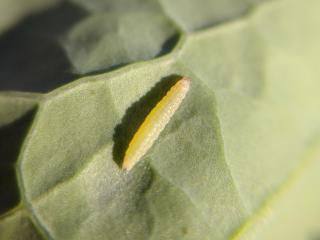Managing diamondback moths late in the season
- Geraldton
- Eastern grainbelt
- Albany
- Esperance
The number of diamondback moths (DBM) being captured in DPIRD traps are continuing to increase in the Geraldton, Eastern grainbelt, Albany and Esperance areas (see maps below).

DPIRD expects eggs are being laid in canola crops, which will lead to an increase in larvae numbers over the next couple of weeks.
The average number of DBM larvae numbers which were sweep netted at DPIRD traps sites in June, July and August are shown in the maps below:

As part of a GRDC-funded project on DBM surveillance DPIRD staff along with grower groups (Mingenew Irwin Group, West Midlands Group and Liebe Group) and SEAR are conducting widespread surveillance for DBM moths and larvae in focus crops during the season. 51 focus crops throughout the grainbelt are being monitored fortnightly throughout the season. As part of a national iMapPESTS project led by Hort Innovation looking at automated pest trapping, DPIRD has installed 17 Trapview automated wing traps to monitor DBM moth numbers. These traps complement the current manual trapping project.
If you are sweep netting canola crops for DBM caterpillars please use the PestFacts WA Reporter app to report and share your findings. It will help DPIRD’s DBM surveillance project team to determine how well the pheromone traps have worked in predicting outbreak risk and trigger crop protection programs before economic damage occurs.
Management
DBM thresholds for control at late flowering (no moisture stress) are 100 or more per 10 sweeps and 150 to 200 caterpillars per 10 sweeps at pod maturation.
Some other helpful tips to consider when sweep netting crops are:
- A high proportion of small grubs (less than 3mm) in a sample often indicates that numbers will increase further.
- Regular assessments of the number of grubs in the crop are required because the numbers can fluctuate and are just as likely to decrease as they are to increase at any stage throughout the growing season. Grub numbers may reduce in both cool, wet and windy conditions or fine and mild weather.
DPIRD research trials have showed that late season application of insecticide (especially multiple sprays) against DBM is less likely to result in a profitable outcome than early and mid-season pest control. This is mainly because DBM have less impact on yield once crops stop flowering. Visual surface grazing and scarring of pod walls and stems will occur from DBM caterpillars feeding in the late season and this may result in a minor reduction of grain filling capacity depending on the number of grubs, soil moisture levels and length of time to harvest. For this reason, the threshold of DBM numbers required to justify spraying will increase over time.
When checking crops with a sweep net be mindful that small native budworm caterpillars can easily be confused with DBM caterpillars in canola crops. DBM caterpillars are usually pale yellowish green and tapered at each end of their body, which grows to about 10mm long. They often wriggle rapidly when disturbed and will hang on a silken thread. Native budworm caterpillars are far more damaging as they grow to larger sizes (up to 40mm long) and will chew into the pods.
Farmers considering late applications of insecticides need to be mindful to adhere to label withholding periods prior to swathing/harvest. For more insecticide information refer to DPIRD’s 2022 winter spring insecticide guide.
To read about previous DBM activity this season refer to the 2022 PestFacts WA Issue 12 article Diamondback moth update and Issue 9 article Diamondback moth.
For more DBM information refer to:
- DPIRD’s Diagnosing diamondback moth page
- GRDC's Diamondback moth fact sheet
- GRDC’s Managing diamondback moth video.
For more information contact Research scientist Svetlana Micic, Albany on +61 (0)8 9892 8591.
Article author: Svetlana Micic (DPIRD Albany).
Article input: Christiaan Valentine (DPIRD Northam) and Dustin Severtson (DPIRD Northam).


